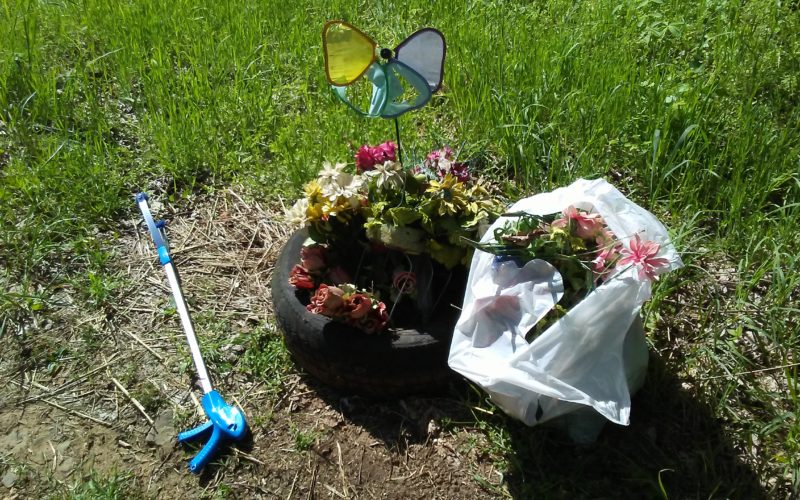Artificial flowers not best way to pay tribute
AMANDA BANCROFT
Making Ripples
As we approach Memorial Day weekend, many families will plan a visit to the graves of loved ones and veterans. They’ll remember the deceased for a moment, and some will leave artificial flowers to spruce up the gravestone with cheery colors year-round. Or that’s how the thinking goes. Then nature happens. The fake flowers are faded by the sun and blown away by the wind. Cemetery workers and volunteer caretakers often find broken artificial flowers carpeting nearby fields and forests like a dystopian spring. Love turns to litter. Far from consecrating a grave, the decorations desecrate it.
Some cemeteries are banning artificial floral arrangements to help the environment and cemetery workers, too. If you find bans on artificial flowers cruel, you’re not alone, but may be in the camp of the well-meaning but misled.
For many mourners, the conflict is merely an aesthetic one. They boil it down to whether they personally enjoy the look of someone else’s grave decoration. Since beauty is subjective, we could find plenty of ugly alternatives to fake flowers. Whether or not we enjoy seeing artificial flowers isn’t a productive point. It makes the problem seem like merely a personal preference debate, which it’s not.
For others who resist a ban, it’s a matter of healing. Artificial flowers are an expression of grief and shouldn’t be restricted. But that’s misleading. Cemetery rules do not prevent visitors from healing. Did humans not mourn before the invention of artificial flowers? Of course they did. A mourner can visit a grave frequently and leave something that doesn’t cause harm.
Some point out that poor people can’t afford to frequently buy real flowers. Fake bouquets are cheap and long-lasting. Are artificial flowers the absolute only option poor people have? No – in fact, a flower seed packet is cheaper. There is an almost endless list of options for grave gifts. Families can create something handmade using natural materials for free, or purchase one of the many alternatives frequently seen around cemeteries all year long. Plus, if you’ve visited cemeteries recently, artificial displays tend to become more about one-upmanship and displaying wealth, rather than just an affordable option for poor families.
Cemetery visitors may interpret bans on artificial flowers as mean-spirited, the pointless dictations of an unknown authority. However, these rules don’t emerge from a single unknown evil. They originate from many people trying to protect cemetery workers, the grave sites and the environment. For example, if cemetery workers get cut on broken glass, that could lead to a ban on glass (which happens in some cemeteries). The ban on glass isn’t restricting the visitor from mourning – they could easily bring something else – the rule is there to protect the workers.
Probably, artificial flower-bringers are not even thinking about future consequences. Who would put a silk flower bouquet with rainbow butterfly windmill upon the grave of a loved one, if they could fast forward a few months and see the poor butterfly’s wings shredded, flower stalks bent and petals faded, the whole display blown across the cemetery into the forest where it blocks a fox’s den like some gaudy trap?
Instead of leaving plastic and non-biodegradable materials, consider natural materials like small stones with inscriptions, straw dolls, real flowers, or seeds from native plants. Pretend your gift is blown away or broken – would it be considered litter? If so, it’s probably not a good choice for a grave. Creativity is key. There are hundreds of ways to show love and express grief without hurting anybody and without trashing cemeteries.
Amanda Bancroft is a writer, artist, and naturalist living in an off-grid tiny house on Kessler Mountain. She and her husband Ryan blog about their adventures and offer tips to those wanting to make a difference at www.RipplesBlog.org.










